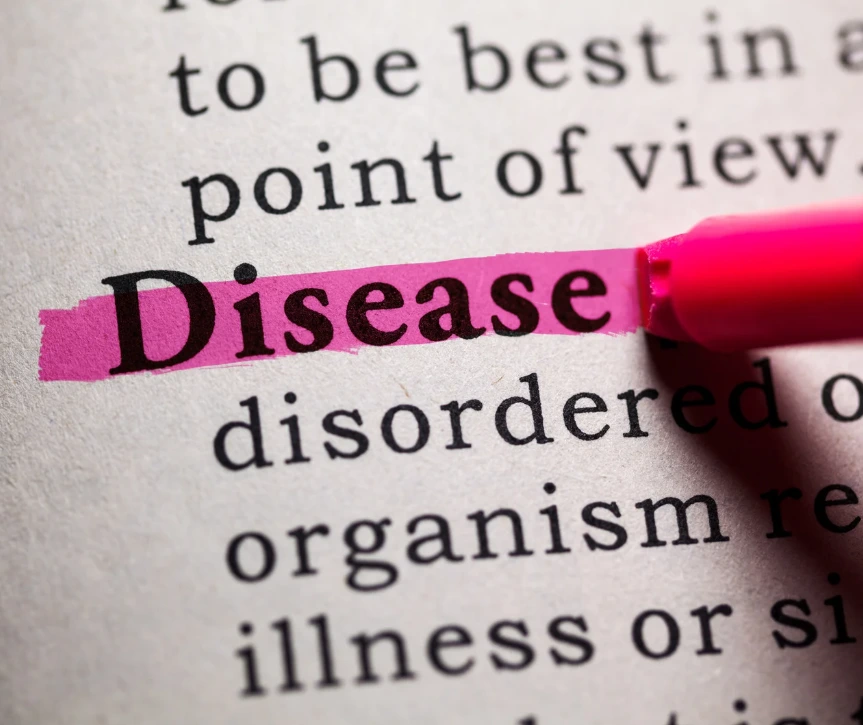News
What is a Rare Disease? A Comprehensive Insight
A rare disease is a condition that affects between 1 in 15 and 1 in 20 people and is distinguished by its infrequent occurrence in the general population.
The precise definition of a "rare disease" varies globally. For instance, in the United States, the Rare Diseases Act of 2002 characterizes a disease as rare if it affects fewer than 200,000 people nationwide. Conversely, the European Commission classifies diseases as rare when they afflict no more than 1 in 2,000 individuals.
Simplifying the data reveals that 1 in 15 to 1 in 20 Americans and British citizens are predicted to develop a rare disease at some time in their life.
Challenges in Diagnosis and Misdiagnosis
A rare disease diagnosis might take a long time, especially in less developed or remote places. Rare diseases often take at least 4 to 5 years to be diagnosed, while this sometimes takes longer than a decade, according to a 2022 study published in Genome Medicine.
The ambiguity surrounding rare diseases frequently stems from their overlapping symptoms, which often conflate with more common conditions.
As such, misdiagnosis is typical. A study published in Frontiers for Public Healthcare found that approximately 40% of rare disease sufferers had initially been diagnosed incorrectly. This can lead to unnecessary treatments or surgical procedures. The risks of misdiagnosis extend beyond physical harm, as they also typically trigger emotional stress and excessive financial costs.
If specialists are few and far between, it’s quite possible that some rare diseases will never be robustly diagnosed.

How Many Rare Diseases Are There?
Around 400 to 450 million people worldwide are thought to be affected by between 6,000 and 8,000 identified rare diseases, according to standard estimates. Some of these diseases were poorly defined until recently.
While some rare diseases affect fewer than 1 in100,000 people, the proportional burden at population level is significant.
This highlights the increased need for more specialised research and medical attention, including developing so-called “orphan treatments” that ensure rare disease sufferers have at least one viable treatment option.
Recognising the Diversity Rare diseases are not just numerically diverse –they are also immensely varied in terms of their origins and impacts.
The rare diseases range from specific and uncommon cancers like chordoma, affecting just1 in 100,000 people, to genetic disorders like congenital central hypoventilation syndrome (CCHS) (also called Ondine’s Curse) and rare autoimmune conditions like Stiff Person Syndrome.
Moreover, many rare diseases disproportionately affect certain age groups, ethnicities, or genders. For instance, Rett Syndrome primarily affects females and is rarely diagnosed before babies are more than six months old, while Duchenne Muscular Dystrophy more commonly develops in young males.
This complicates the process of managing rare diseases, as researchers and manufacturers must develop research methods and treatment protocols that are both highly specialised and incredibly varied.

How Many Rare Diseases Are Genetic?
Many rare diseases have genetic origins or backgrounds. According to estimates, approximately 72% of rare diseases are geneticin origin.
Genetic studies and research into the human genome are indispensable tools in identifyin gnew rare diseases and finding ways to diagnose and treat them. The Role of Inherited Factors
Genetics isn’t solely concerned with what we inherit from our parents – it’s also about how genes behave in our bodies.
Family medical histories can provide valuable insights into patterns of inheritance, aiding both diagnosis and potential treatment plans. However, it’s crucial to differentiate between genetic and hereditary when discussing rare diseases. Specifically, while all hereditary diseases are genetic, not all genetic diseases are hereditary.
For instance, some rare diseases result from denovo mutations – changes in the DNA that occur spontaneously after conception rather than being passed down from parents.
Providing Effective Medications For Rare Diseases
Creating effective treatments for rare diseases presents a diverse set of challenges. Firstly, due to the small patient population, pharmaceutical companies often deem investing in developing medications for rare conditions financially unviable.
Developing drugs for small populations is seldom profitable, and even testing and re-appropriating existing drugs is an expensive endeavour. Government initiatives and public-private partnerships are increasingly bridging the gap here.
Many jurisdictions offer incentives like tax breaks and funding to pharmaceutical companies willing to invest in rare disease research and drug development. Research interest in rare diseases among the scientific community has also increased.
There is still more work to be done, but these activities have led to an increase in the number of treatments that are gradually but steadily becoming available.

IMPROVING RARE DISEASE MEDICATION ACCESSIBILITY WITH MASTERS
The landscape of rare diseases is intricate and multifaceted, and at least hundreds remain poorly understood. Research interest in rare diseases has increased in recent years, slowly increasing the number of viable treatments available.
Simultaneously, advances in genetic research are heightening our collective understanding of these diseases, improving both diagnosis and available treatments.
As public and private sectors continue to collaborate, we edge closer to a future where the term rare does not equate to overlooked or even ignored.
Dedicated to enhancing patient access to their medications, Masters is a leading global pharmaceutical company that understands the difficulties posed by rare diseases. We are professional pharmaceutical drug suppliers, making medications for rare ailments available in developing markets. Through the power of medicine, we continuously work to transform lives.

